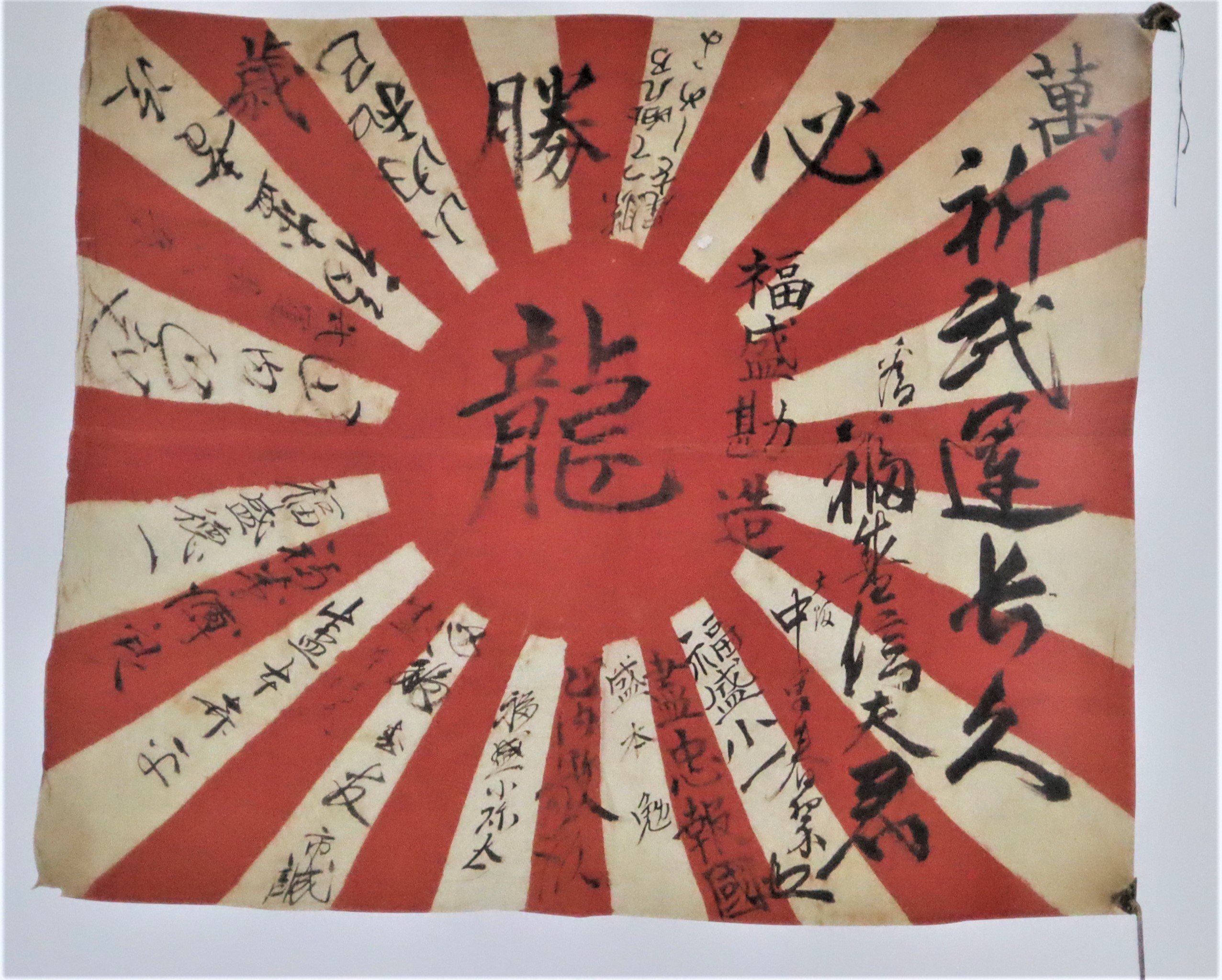Today we will be talking with Jareth Holub. Jareth is known primarily as a Japanese Navy and Army head gear collector, although he has an extensive collection of Japanese militaria as well. He has a knack for acquiring many rare items for his collection. His comments and observations are often read by those who frequent some of the more popular collector forums. I first met Jareth around 2005 at the MAX Show, when it was located in its old location at the mall in Monroeville, PA. He tends to be quite informative when it comes to Japanese helmets and hats, and I have wanted to speak to him for some time.
FOWM: Hello Jareth. I’m happy to be able to speak to you today about Japanese World War Two militaria and headgear. Thank you again for doing this interview.
JH: Thank you for giving me this opportunity.
FOWM: I don’t know whether you recall our first meeting at the MAX Show, but we were introduced by a mutual friend, Eric Doody. Eric had a table at the show, and you were having a chat with him, at the time I first walked up and he introduced us.
JH: Yes, I remember. I stopped going to the shows when my daughter was born and my new
job required weekends. I enjoyed the camaraderie at those shows! It was great meeting
fellow collectors and putting faces on people I’d only heard of.
FOWM: So, how and when did you first become interested in collecting Japanese military items from World War Two? What were the first pieces that you acquired? And How did you acquire them? If you purchased any items, do you remember how much you had to pay for them?
JH: My Grandfather was a Merchant Marine Captain during WW2. He shared his stories
with me such as being torpedoed by the Germans and being left afloat in a lifeboat for a few days. On a later date, he was
bombed by the Japanese. A cluster bomb fell on his bridge; luckily it was a
dud. The crew deactivated it and presented it to him. My Grandfather gave me this bomb.
My Father was an antique dealer. Anything military related eventually became mine; after
polishing silver and stripping furniture I earned it! I later sold off most of my collection but
kept the Japanese items. I remember the days of $150 Japanese helmets!
FOWM: What would you say is your favorite one or two categories of Japanese militaria to collect today? And What is it about these areas that interests you the most?
JH: Now, I’m only collecting Japanese naval combat items and Japanese paratrooper.
My predominant interest lies in Japanese Special Naval Landing Force; I’m really intrigued by these forces. My
favorite military collectibles are navy headgear: helmets to field caps. I’ve always
loved headgear.
FOWM: What is the most fun aspect of our hobby to you?
JH: I enjoy the search and the networking. I especially enjoy finding objects with names or
information that can be traced. Every piece has a history, whether it’s in mint condition, or a salty
captured piece in the field.
FOWM: Do you see any pitfalls within the hobby or negative aspects that are overlooked, primarily by new collectors?
JH: Buying reference books is essential. Handling objects and finding mentors is extremely
important. As in all militaria, there are fakes. Once you’re comfortable buying, I always say to
buy the item in the absolute best condition. If you can’t afford it then try and buy it on layaway; many dealers are happy to accommodate. Upgrading a lesser condition item isn’t fun.
FOWM: Do you see many reproduction items in your area of interest? Or Items that have been altered? And How difficult are they to identify?
JH: I’ve become more cautious buying items from Japan. I think there are some excellent looking
fakes out there or entering the market. I’ve noticed flags that are enhanced postwar. If something is too good to be
true, it usually is! Get as many translations as possible! Knowledge is power. The more you
learn and see, the better off you’ll be.
FOWM: You have been collecting Japanese World War Two militaria for a number of years now. What advice would you offer to a new collector today? And Why?
JH: As I mentioned above; Make friends, be patient, buy books first, and find as many
mentors as you can. We’ve all made learning mistakes. We’ve all bought items that were
bad. It’s part of the process.
FOWM: Some areas of militaria collecting in general have become quite expensive. Can a new collector who has interests similar to yours, still find affordable items to collect? Where would you recommend, they begin?
JH: There are many interesting and affordable areas; collecting sake cups, collar tabs,
patriotic items or civilian defense, etc.
FOWM: What do you see today as challenges, if any, to the collecting of Japanese World War Two militaria, or to collecting military relics in general?
JH: The internet has opened up our collecting world. Yes, it’s more competitive, but it’s
also a great source of information on demand. Challenges are finding the items and
purchasing them by photos. In hand is the best approach but that’s getting harder. We live
in difficult times so we must adapt and overcome. I hope the large shows return!
FOWM: Thanks again, Jareth for agreeing to this interview and for answering some of our questions. I know this information will be helpful to both new and more experienced collectors as they try and fathom the Japanese headgear and militaria hobby.
JH: It was an honor and a pleasure.

